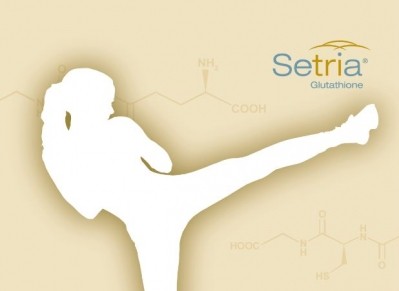Multi-biomarker approach demonstrates flavanol cardio benefits: Study

Mindful of the European Food Safety Authority’s (EFSA) tough stance on antioxidant science, the Maastricht University researchers tested a number of biomarkers and found a significant increase in cardiovascular-related measures when the results were combined.
The most significant change occurred in the ratio of glutathione to glutathione disulphide in erythrocytes. It was 22% higher in the supplemented subjects.
They also found OPCs reduced bacterial endotoxins and expression of inflammatory genes in leukocytes and reduced serum total cholesterol and LDL cholesterol.
But platelet aggregation, plasma levels of nitric oxide surrogates, endothelin-1, C-reactive protein, and prostaglandin F2alpha were not significantly different.
“However, integrating all measured effects into a global vascular health index and taking into account that the trial was performed with healthy subjects,” the researchers, led by Dr. Antje Weseler concluded.
“a representative panel of markers”
They commented on some of the challenges the European Union nutrition and health claims regulation (NHCR) has presented to the field of nutrition science, especially in regard to biomarkers.
“Food scientists are facing the challenge to prove the clinical efficacy of nutrients that modulate human physiology in a subtle and non-specific manner,” the observed.
“In drug research, where the one-target-one-hit concept is imperative, randomized clinical trials with a well-defined single endpoint are the gold standard of efficacy testing. However, a single endpoint neither sufficiently reflects the multifarious nature of nutrients’ functions in humans nor the complexity of pathomechanisms underlying virtually all diseases.”
“Our study pioneered the implementation of a pragmatic solution for this problem: Carefully select a representative panel of markers that reflect the major relevant pathological aberrations and integrate all measured effects into a global health index.”
Method
The researchers recruited smokers because they sought a healthy but slightly distressed group to test against the placebo group.
The double-blind, randomised, placebo-controlled intervention study was comprised of 28 middle-aged, smoking Dutch males to take either placebo or 200 mg per day of MOFs from grape seeds.
“The meticulous selection of outcome parameters led to a spectrum of makers that comprised established as well as novel cardiovascular risk factors and systemic biomarkers reflecting the most essential pathomechanisms in the human vasculature on a functional and (sub)cellular level,” the researchers wrote.
“The integration of the changes in these biomarkers into a vascular health index enabled us to demonstrate the beneficial effects of MOF on vascular health in general. This is the first trial that applies an integrative biomarker approach in order to determine the health effects of a dietary supplementation in the human vasculature.”
The study was partially sponsored by the International Nutrition Company along with a Seventh Framework Programme European Union grant under the Flaviola project.
Source: PLoS ONE
6(12): e28460. doi:10.1371/journal.pone.0028460 (2011)
‘Pleiotropic Benefit of Monomeric and Oligomeric Flavanols on Vascular Health - A Randomized Controlled Clinical Pilot Study’
Authors: Weseler AR, Ruijters EJB, Drittij-Reijnders M-J, Reesink KD, Haenen GRMM, et al.















